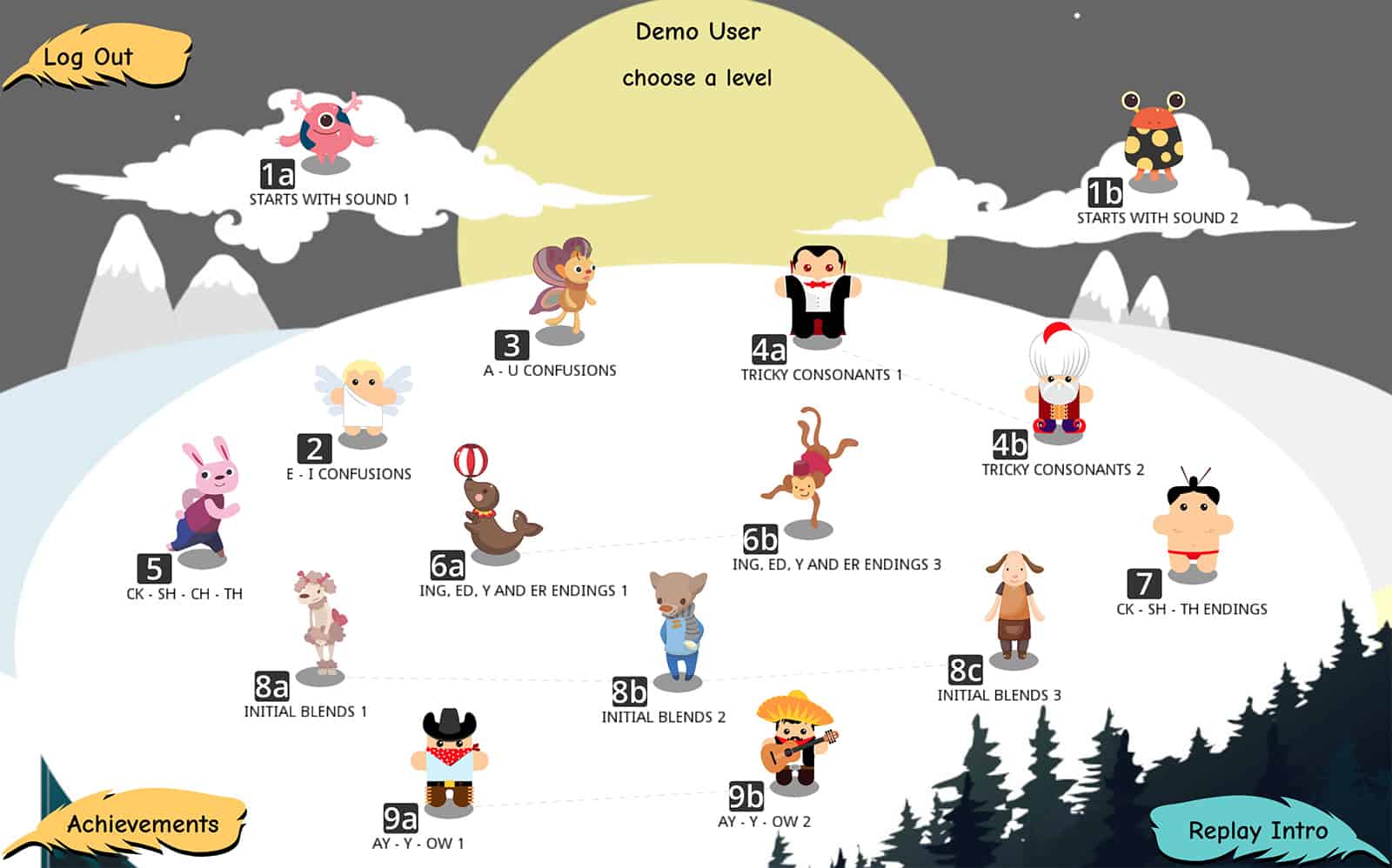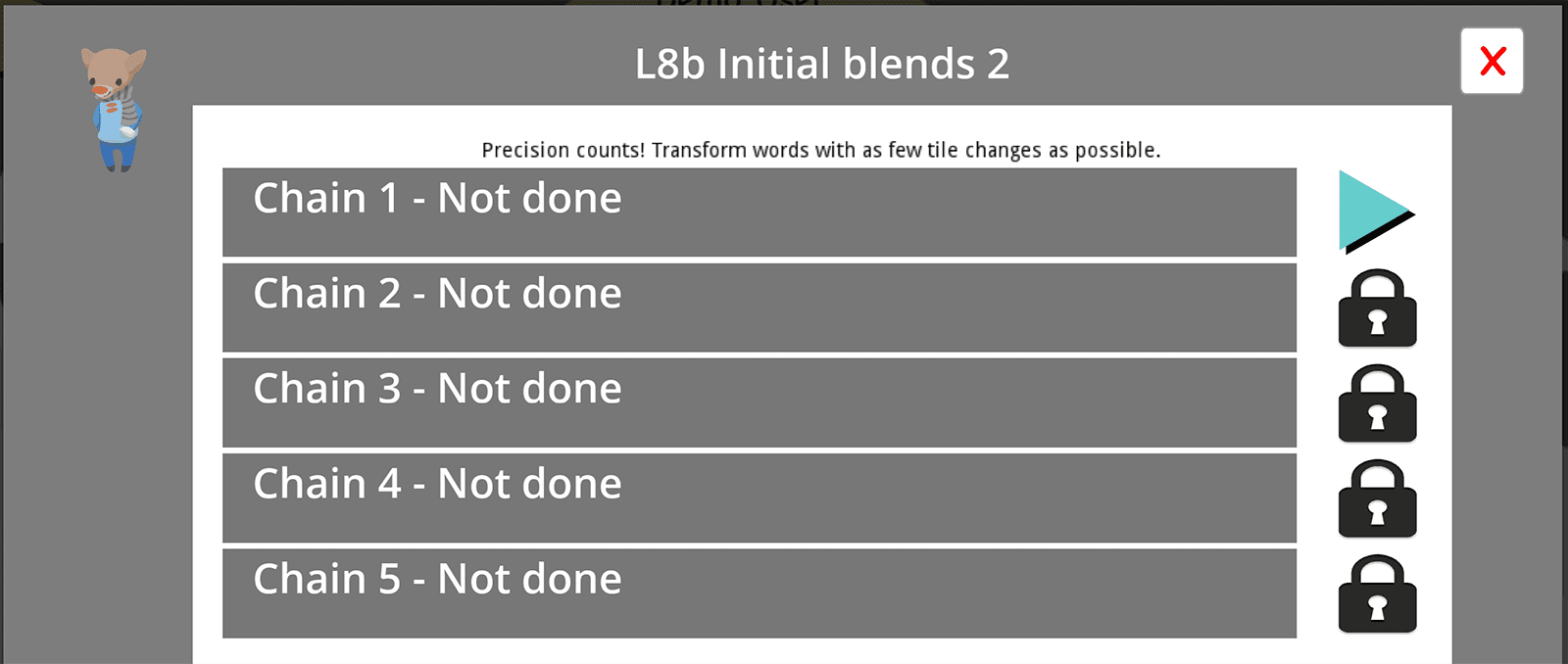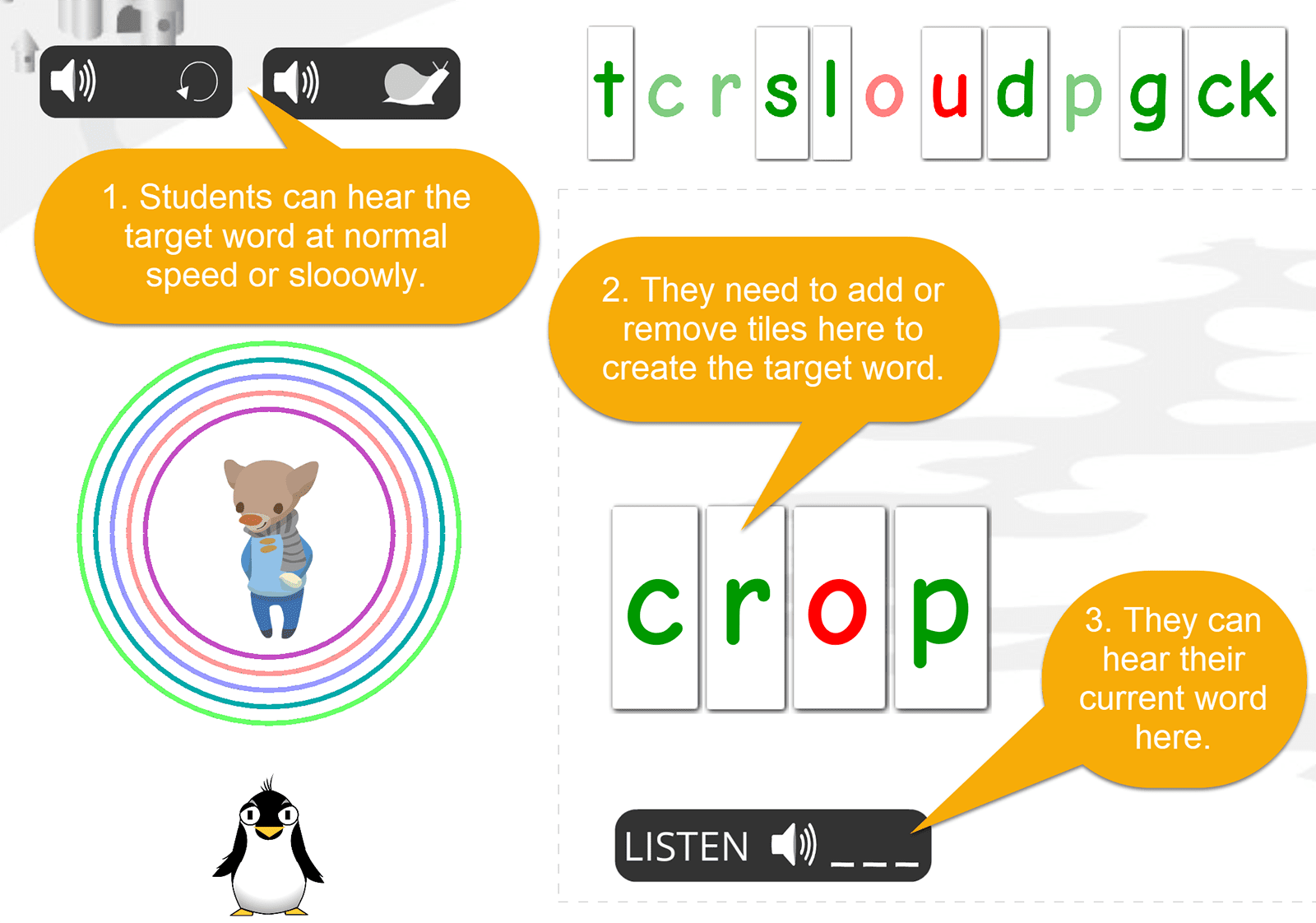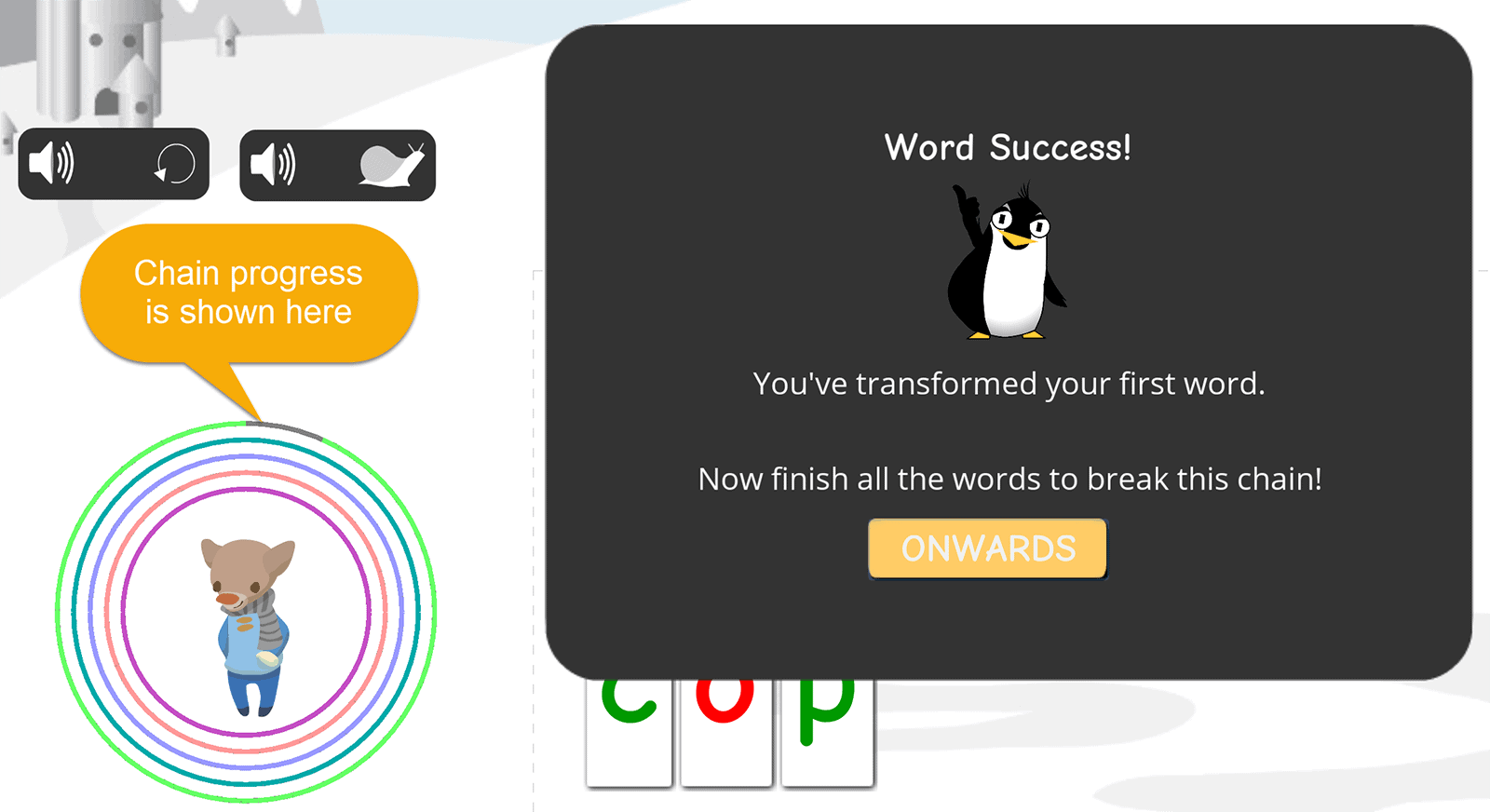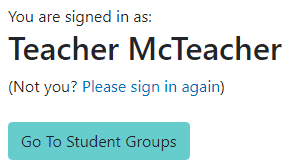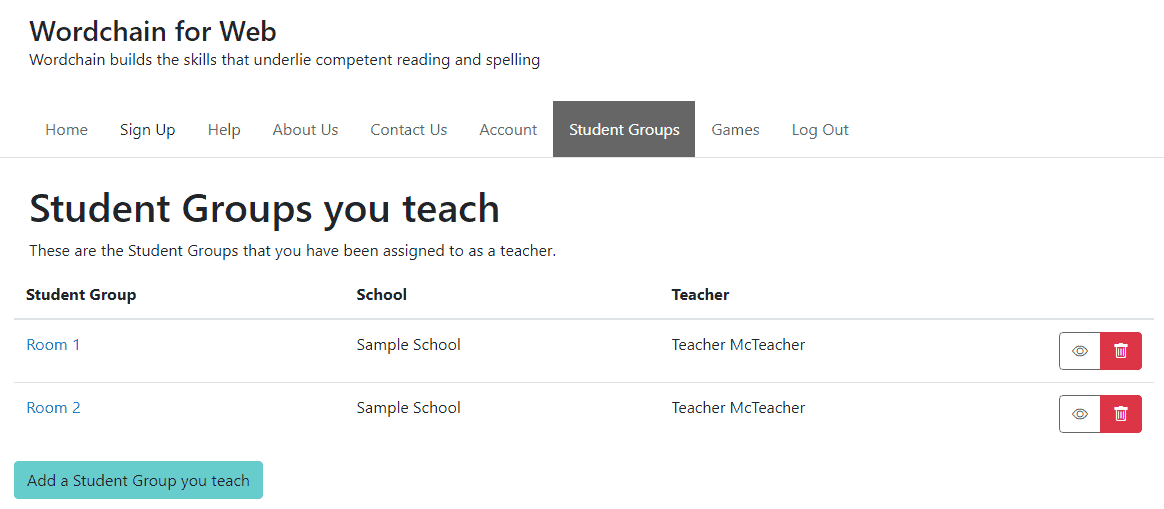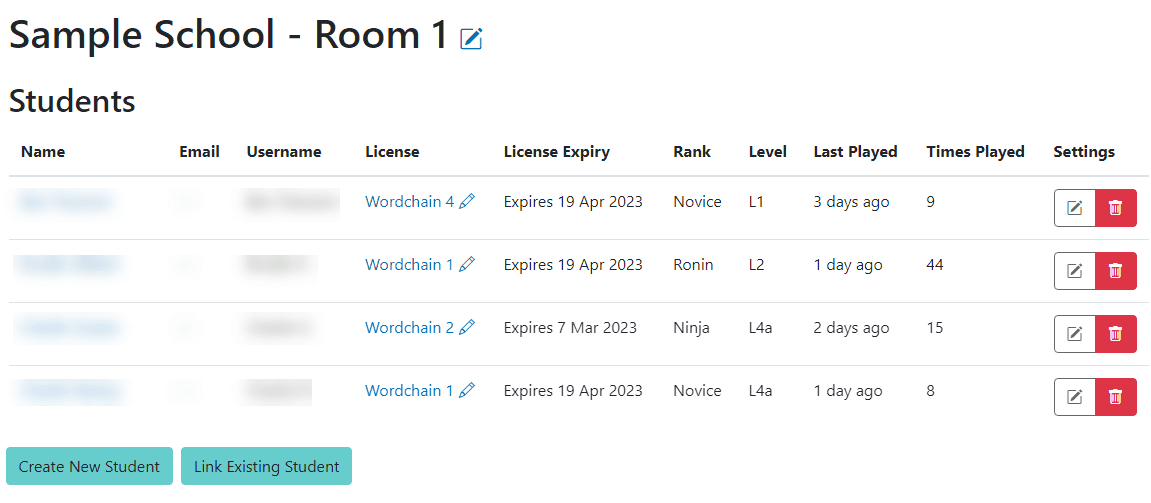Teachers and Wordchain
Welcome!
You’re a teacher, which means you’ve got a lot on.
This support doc is aimed at getting you and your students up and running with Wordchain for Web as efficiently as possible.
Let’s begin!
Click or tap on the topics most immediately important to you:
What is Wordchain?
Wordchain is part of Betsy Sewell’s Agility with Sound structured literacy programme.
Wordchain provides the necessary volume of practice in phonemic manipulation that a student needs to become a capable reader.
It does so with an engaging, supportive game-based framework that keeps kids motivated to progress and learn.
It brings together Betsy’s decades of experience as a teacher, research scientist and mother of two dyslexic kids with Nectarine’s 30+ years of creating award-winning interactive educational projects.
Science shows that in successful readers, it is the speech and language parts of the brain that are most active in reading.
Competent decoding and spelling begin with the ability to detect and accurately identify the individual sounds in spoken words: a listening skill. Wordchain uses a New Zealand accent so that the pronunciation of words matches the sounds in the student’s head.
It is the training ground for making that process instinctive, automatic and effortless.
Wordchain is supported by fluency sheets to embed those skills, and over 130 sequenced decodable readers that directly follow Wordchain levels to build comprehension.
Related: Why Wordchain?
What does Wordchain look like for students?
There are four Wordchain games (with a fifth in development) involving increasing complexity of words.
The easiest way to see what Wordchain is like for your students is to try the demos at https://play.wordchain.co.nz/games/
When a student logs in and clicks on the Wordchain assigned to them, they will see a series of levels:
Let’s say they click on “8B – Initial Blends 2”. They will work through a series of chains to free this friend:
When they start, chain 1 is the only one available. When they enter the chain, they will see the friend surrounded by coloured chains.
They will transform the current word into a target word by dragging tiles in and out:
In this simple first case, they need to transform “crop” into “cop”. They can hear the target word at normal speed, or said slowly – in a New Zealand accent! They can also hear what their current word sounds like.
If they drag out the ‘r’ tile, they’ll see this:
The penguin jumps with joy, there are positive sounds, and part of the chain dissolves to show progress. For this first word, they’ll get further encouragement with a dialogue box, and they have a score and a rank that will increase as they progress.
When they finish the words in this chain, they’ll get a reward screen and then be prompted to break ALL the chains and free this friend. (In Wordchain 3 and 4, the theme is creating chains to capture rogue robots or monsters.)
These friends will appear in an achievements screen, encouraging students to free ALL the friends.
Each chain requires transforming 8-14 words, so in this level alone the student will do about 60 transformations, and be motivated to repeat it three times to save all three friends in this level. That’s about 180 manipulations of words, and each Wordchain has about 15 levels, so students will transform about 2,700 words in a Wordchain game, often with multiple phonemic manipulations per word!
This practice is what moves manipulation towards being instinctive, automatic and effortless.
And much like students will happily roll and add dice many times for a boardgame without seeing it as ‘maths work’, we’ve framed the manipulation in a game format that often sees students asking to “play the Penguin game again!”
What does Wordchain look like for teachers?
For teachers, when you log in you will have access to one or more Student Groups:
A Student Group is a way to organise students: by year, by room, by teacher name or however works best for you.
You click on a Student Group name to enter it, and you will see a list of students in that group.
You can rename the Student Group by clicking on the pencil icon next to its name, you can add new students or link existing ones, you can change the Wordchain a student is on, and you can see info about their Rank, Level and the play stats.
You can also click on the student’s name to make changes to their name, email, username, or to reset their password. You’ll also be able to set some preferences for that particular student.
How do I get started?
You should have been added as a Teacher to Wordchain for Web by your Admin, and assigned to a Student Group.
You should also have an email inviting you to set a password. If you do not, please check your spam or junk folder!
If you really can’t find the email, you can:
- ask your admin to set a password for you
- contact us via email
- contact us via online form
Once you have an email (and/or username) and password, you can use them log in here:
(Note: your students will log in at the same place, but get a different result.)
Once you are logged in, Steps 3 & 4 here will show you how to add students and assign them licences.
If you haven’t already read it, “What does Wordchain look like for Teachers?” above will give you a good quick overview.
Teacher FAQs
You’ll also find more tips and tricks on the support page:
There are more support documents on the Support page. You may be interested in:

